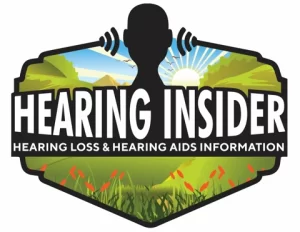Hearing loss affects millions of people worldwide, limiting communication, straining relationships, and impacting both safety and emotional well-being. Fortunately, modern hearing aids are no longer just amplifiers of sound—they are sophisticated medical devices designed to restore confidence, connection, and quality of life.
As a clinical audiologist who has worked with thousands of patients, I’ve seen firsthand how life-changing hearing aids can be. In this in-depth guide, I’ll break down the seven major benefits of hearing aids, supported by research, patient stories, and professional insights.
👉 For a broader overview, visit our complete guide to hearing aids.

Quick Benefits Overview
| Benefit | Explanation |
|---|---|
| Improved speech & communication | Reduces listening effort, making conversations clearer—even in noisy environments. |
| Stronger family relationships | Prevents misunderstandings and helps you fully engage with loved ones. |
| Greater safety & awareness | Restores ability to hear alarms, traffic, and other critical sounds. |
| Enhanced cognitive function | Keeps the brain active and helps prevent cognitive decline. |
| Better quality of life | Boosts confidence, independence, and emotional well-being. |
| Boosted professional performance | Improves workplace communication and participation. |
| Custom-fit solutions | Programs tailored by an audiologist to your exact needs. |
1. Improved Speech and Communication
One of the most immediate and noticeable benefits of hearing aids is the ability to follow conversations with ease. Untreated hearing loss often forces people to withdraw from social situations, especially in restaurants, family gatherings, or busy environments where background noise dominates.

Modern hearing aids use advanced features like:
- Directional microphones and beamforming to focus on voices in front of you.
- Noise reduction algorithms to suppress competing sounds.
- Artificial intelligence (AI) to adapt to changing sound environments in real time.
📊 Research highlight: In a study published by the Journal of the American Academy of Audiology, participants using directional microphones showed a 30% improvement in speech recognition in noisy conditions compared to those without amplification (source).
👂 Audiologist insight: I often hear patients say, “I finally had a real conversation with my grandkids at the dinner table without asking them to repeat everything.” This restored connection is often the very first “wow” moment after a fitting.
2. Stronger Family Relationships
Hearing aids can quite literally save relationships. When words are missed, it can cause frustration for both speaker and listener, leading to unnecessary tension and distance. Over time, untreated hearing loss may create a perception of being ignored or left out.
Once properly fitted with hearing aids, couples and families frequently report:
- Fewer arguments due to miscommunication.
- More participation in family meals, celebrations, and everyday conversations.
- A restored sense of closeness and inclusion.
💬 One patient told me: “It’s like I’m part of the family again—not just sitting on the sidelines.”
📊 The Better Hearing Institute found that more than 70% of hearing aid users said their relationships improved once they started wearing their devices (BHI study PDF).
3. Greater Safety and Awareness
Sound is a critical safety tool. From hearing the beep of a microwave to detecting a car approaching from behind, auditory cues protect us every day. Hearing loss can reduce awareness, increasing the risk of accidents.

Modern hearing aids restore and even enhance environmental awareness:
- Alerts such as smoke detectors, doorbells, or alarms are easier to detect.
- Smartphone integration can push safety notifications directly into your ears.
- Some advanced models include fall detection and GPS alerts, notifying caregivers in an emergency.
📊 Johns Hopkins research shows older adults with untreated hearing loss are significantly more likely to experience falls, while hearing aid users benefit from improved balance and awareness (Johns Hopkins study).
4. Enhanced Cognitive Function
Untreated hearing loss is strongly linked to cognitive decline and dementia. A landmark Lancet study found that people with untreated hearing loss had a 200–500% increased risk of developing dementia compared to those with normal hearing (Lancet Commission 2020).

Here’s why: when you struggle to hear, your brain devotes enormous energy to decoding sounds, leaving fewer resources for memory and higher-level thinking. Over time, this “cognitive overload” can accelerate decline.
Hearing aids reduce listening effort, allowing the brain to process sounds naturally again. The result is improved memory, focus, and mental sharpness.
💡 Technology spotlight: Oticon’s BrainHearing™ and similar innovations deliver a complete soundscape, helping the brain orient, focus, and understand speech effortlessly.
5. Better Quality of Life
Hearing aids don’t just restore hearing—they restore joy in daily living. People who once avoided social activities often return to:
- Religious services
- Book clubs and social groups
- Concerts and theaters
- Casual conversations with neighbors
📊 The National Council on Aging found that hearing aid users reported significantly higher levels of emotional well-being and independence than those with untreated hearing loss (NCOA article).
👂 Audiologist perspective: Many of my patients describe the change as “getting their life back.” They no longer feel embarrassed about missing words or dependent on others to “translate” conversations.
Modern hearing aids are also:
- Discreet—with nearly invisible styles available.
- Comfortable—thanks to lightweight designs.
- Convenient—with rechargeable batteries replacing tiny disposable ones.
6. Boosted Professional Performance
Hearing well at work isn’t just a convenience—it’s a career necessity. Untreated hearing loss can lead to missed opportunities, miscommunication, and even reduced income.
📊 According to the Better Hearing Institute, untreated hearing loss is associated with up to $30,000 in lost annual income, while hearing aid users significantly reduce this risk (BHI study PDF).
Hearing aids empower professionals by:
- Making meetings, conference calls, and presentations clear and less tiring.
- Streaming audio directly from laptops, tablets, and phones via Bluetooth.
- Connecting with telecoil (T-coil) systems in auditoriums and meeting rooms for crisp sound.
👔 A patient once shared with me: “I finally spoke up in meetings again because I wasn’t afraid of mishearing a question.” That confidence often translates to career growth.
7. Custom Solutions for Your Needs
No two cases of hearing loss are identical. That’s why an audiologist’s role is critical. A personalized fitting includes:
- Real-ear measurements to ensure accurate amplification.
- Programming adjustments for different environments (quiet office vs. noisy café).
- Style choices (RIC, BTE, CIC) that balance performance with personal preference.
- Custom earmolds for comfort and stability.
👂 Audiologist note: My goal is always to fit devices that don’t just restore hearing—they integrate seamlessly into a patient’s lifestyle. When the fit is right, people forget they’re even wearing them.
For a breakdown of the best models, see our best hearing aid recommendations.
Frequently Asked Questions
Do hearing aids restore normal hearing?
No. They don’t cure hearing loss, but for most people, they make listening effortless and natural again.
How long do hearing aids last?
With proper care, 5–7 years is typical. However, many users upgrade sooner to access new technology.
Will people notice I’m wearing hearing aids?
Modern devices are discreet and often invisible to others.
Are hearing aids covered by insurance or Medicare?
Traditional Medicare does not cover hearing aids, though some Medicare Advantage and private insurance plans may help. Always check your policy.
Do I need two hearing aids or just one?
If you have hearing loss in both ears, two devices are strongly recommended for balance, speech clarity, and overall brain processing.
What’s the difference between OTC and prescription hearing aids?
OTC devices may work for mild-to-moderate losses, but professionally fitted hearing aids are essential for more complex or severe hearing needs.
Final Thoughts
Hearing aids are not just about sound—they are about restoring connection, safety, confidence, and joy in life. Backed by extensive research and years of patient success stories, the benefits are undeniable.
If you’re considering hearing aids, I strongly encourage exploring our in-depth article on the benefits of hearing aids to get started.
👂 As an audiologist, my advice is simple: don’t wait. The sooner you address hearing loss, the more benefits you’ll experience—both now and for years to come.

